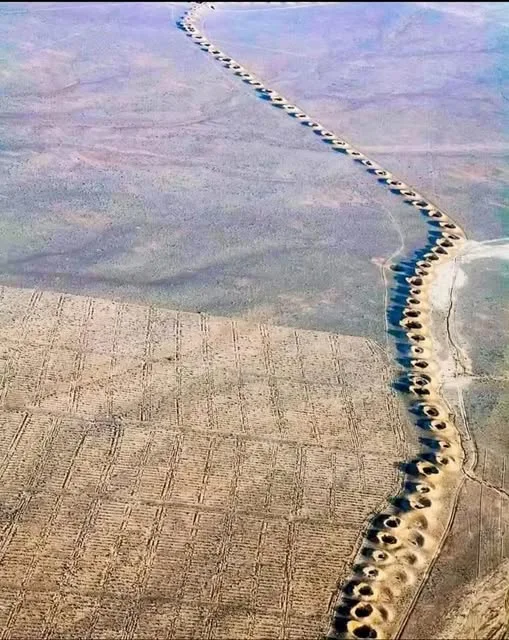Introduction
In the arid landscapes of ancient Persia (modern-day Iran), a remarkable innovation emerged 3,200 years ago that transformed the region’s destiny—the Qanat. This underground aqueduct system, a testament to human ingenuity, brought life to otherwise uninhabitable lands. On this Wednesday, July 9, 2025, at 12:04 PM +07, let’s explore the fascinating engineering behind the Qanats, their sustainable design, and their enduring legacy as a cornerstone of ancient Persian civilization.

The Birth of a Water Revolution
The Qanat system originated around 1200 BCE, during the height of the Achaemenid Empire, as a response to the region’s scorching climate and scarce water resources. Developed by skilled engineers and laborers, these subterranean channels were designed to tap into groundwater from elevated terrains, such as mountain foothills, and transport it across long distances to villages, farms, and cities. Unlike surface canals vulnerable to evaporation and flooding, Qanats operated underground, preserving water and protecting it from the harsh sun. This innovation enabled the flourishing of agriculture and urban centers in areas where survival seemed impossible, laying the foundation for Persia’s prosperity.
Engineering Marvels Underground
Constructing a Qanat was a labor-intensive feat accomplished without modern machinery. Workers manually dug a series of vertical shafts, spaced approximately 20–30 meters apart, into the earth. Each shaft was strategically positioned lower than the previous one, creating a gentle slope that relied solely on gravity to move water. These shafts, often reaching depths of 20–100 meters, served dual purposes: accessing aquifers and ensuring ventilation for the laborers toiling in the dark, oxygen-scarce tunnels. The main channel, or mother well, connected these shafts, channeling water over distances of up to 70 kilometers in some cases. The result was a flowing stream that emerged at the surface near human settlements, providing a reliable water source year-round.
Sustainable Principles in Action
The Qanat system embodied sustainable engineering long before the term was coined. By harnessing gravity rather than mechanical pumps, it required no energy input, minimizing environmental impact. The underground design reduced water loss from evaporation, a critical advantage in arid climates where temperatures often exceeded 40°C (104°F). Additionally, the system prevented soil salinization by delivering water directly to fields, preserving agricultural productivity. The Persians’ deep understanding of hydrology and geology—gained through observation of aquifers and terrain—was remarkable, reflecting a sophisticated knowledge base that rivaled contemporary civilizations.
Cultural and Economic Impact
Qanats were more than engineering feats; they were lifelines for ancient Persian society. They supported the growth of cities like Yazd and Gonabad, where lush orchards and fields thrived amidst desert sands. The consistent water supply enabled the cultivation of crops such as pomegranates, grapes, and wheat, fueling trade and sustaining populations. Communities organized around Qanat maintenance, with families or clans inheriting the responsibility of cleaning and repairing the channels. This communal effort fostered social cohesion and ensured the system’s longevity, a practice that continues in some areas today.
A Legacy That Endures
Remarkably, many Qanats remain operational in Iran, with UNESCO recognizing them as a World Heritage site in 2016 under the Persian Qanat list. In regions like Khorasan and Kerman, these ancient structures still irrigate fields and supply drinking water, a testament to their durability and timeless design. Modern challenges, such as urban expansion and over-extraction of groundwater, threaten their survival, prompting efforts to preserve this cultural treasure. On this July day in 2025, the Qanats stand as a bridge between past and present, inspiring contemporary sustainable water management practices worldwide.
Conclusion
The Qanat system is a shining example of ancient Persia’s ingenuity, blending practical engineering with ecological wisdom. From the deep shafts dug by hand to the gravity-fed streams that nourished civilizations, these underground aqueducts transformed arid lands into thriving oases. As we marvel at their 3,200-year legacy, let this story remind us of the power of human innovation to conquer challenges and the importance of preserving such enduring solutions. On this warm afternoon in 2025, the Qanats invite us to look to the past for a sustainable future.





